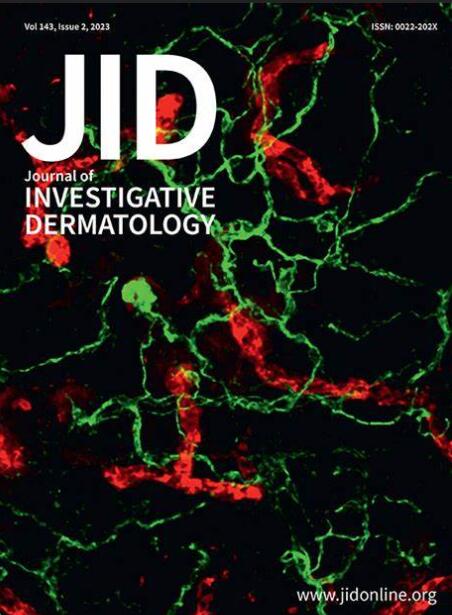Single-Cell RNA Sequencing Reveals Molecular Signatures that Distinguish Allergic from Irritant Contact Dermatitis
IF 5.7
2区 医学
Q1 DERMATOLOGY
引用次数: 0
Abstract
Allergic contact dermatitis (ACD) is a pruritic skin disease caused by environmental chemicals that induce cell-mediated skin inflammation within susceptible individuals. Irritant contact dermatitis (ICD) is caused by direct damage to the skin barrier by environmental insults. Diagnosis can be challenging because both types of contact dermatitis can appear similar by visual examination, and histopathological analysis does not reliably distinguish ACD from ICD. To discover specific biomarkers of ACD and ICD, we characterized the transcriptomic and proteomic changes that occur within the skin during each type of contact dermatitis. We induced ACD and ICD in healthy human volunteers and sampled skin using a nonscarring suction blister biopsy method that collects interstitial fluid and cellular infiltrate. Single-cell RNA sequencing analysis revealed that cell-specific transcriptome differences rather than cell-type proportions best distinguished ACD from ICD. Allergy-specific genes were associated with upregulation of IFNG, and cell signaling network analysis implicated several other genes such as IL4, despite their low expression levels. We validated transcriptomic differences with proteomic assays on blister fluid and trained a logistic regression model on skin interstitial fluid proteins that could distinguish ACD from ICD and healthy control skin with 93% sensitivity and 93% specificity.
单细胞 RNA 序列分析揭示了区分过敏性接触性皮炎和刺激性接触性皮炎的分子特征。
过敏性接触性皮炎(ACD)是一种瘙痒性皮肤病,由环境中的化学物质引起,诱发易感人群的细胞介导的皮肤炎症。刺激性接触性皮炎(ICD)是由环境刺激直接损伤皮肤屏障引起的。这两种类型的接触性皮炎在肉眼观察下可能相似,而组织病理学分析并不能可靠地区分刺激性接触性皮炎和刺激性接触性皮炎,因此诊断具有挑战性。为了发现 ACD 和 ICD 的特异性生物标志物,我们对每种类型的接触性皮炎期间皮肤内发生的转录组和蛋白质组变化进行了表征。我们在健康的人类志愿者身上诱发了 ACD 和 ICD,并使用非瘢痕吸疱活检法采集了皮肤样本,该方法可收集间质和细胞浸润。单细胞 RNA 序列分析显示,细胞特异性转录组差异而非细胞类型比例最能区分 ACD 和 ICD。过敏特异性基因与 IFNG 的上调有关,而细胞信号网络分析则牵涉到其他几个基因,如 IL4,尽管它们的表达水平较低。我们通过对水疱液的蛋白质组检测验证了转录组的差异,并对皮肤间质液蛋白质训练了一个逻辑回归模型,该模型能以 93% 的灵敏度和 93% 的特异性将 ACD 与 ICD 和健康对照皮肤区分开来。
本文章由计算机程序翻译,如有差异,请以英文原文为准。
求助全文
约1分钟内获得全文
求助全文
来源期刊
CiteScore
8.70
自引率
4.60%
发文量
1610
审稿时长
2 months
期刊介绍:
Journal of Investigative Dermatology (JID) publishes reports describing original research on all aspects of cutaneous biology and skin disease. Topics include biochemistry, biophysics, carcinogenesis, cell regulation, clinical research, development, embryology, epidemiology and other population-based research, extracellular matrix, genetics, immunology, melanocyte biology, microbiology, molecular and cell biology, pathology, percutaneous absorption, pharmacology, photobiology, physiology, skin structure, and wound healing

 求助内容:
求助内容: 应助结果提醒方式:
应助结果提醒方式:


